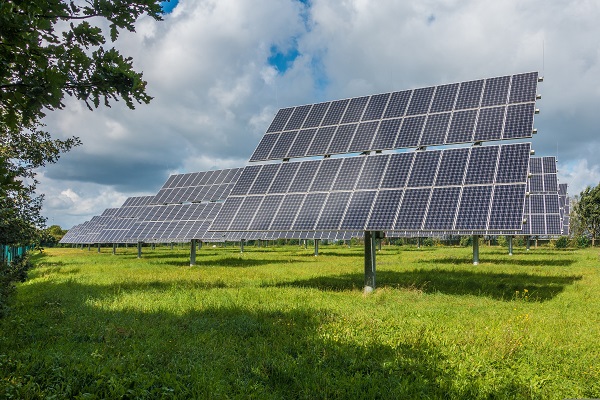1. Introduction: Leading the Future of Solar Energy
As the world transitions toward cleaner energy, solar power continues to dominate the renewable landscape. Among global leaders, JinkoSolar has earned an exceptional reputation for producing high-performance photovoltaic modules.
The Jinko mono solar panel represents one of the most advanced and efficient technologies in today’s solar market, combining cutting-edge monocrystalline cell design with long-term durability and outstanding energy conversion rates.
This article provides a complete overview of the efficiency, structure, features, and applications of Jinko mono solar panels — helping homeowners, installers, and businesses understand why JinkoSolar remains a top choice for sustainable energy solutions.
2. What Is a Jinko Mono Solar Panel?
A Jinko mono solar panel refers to a monocrystalline photovoltaic module manufactured by JinkoSolar.
Unlike polycrystalline panels, which are made from multiple silicon fragments, monocrystalline panels are produced from a single continuous crystal structure, offering higher purity and efficiency.

Key Characteristics:
-
Uniform black appearance for sleek aesthetics.
-
Higher efficiency than polycrystalline alternatives.
-
Longer lifespan, typically exceeding 25 years.
-
Better performance under low-light and high-temperature conditions.
Jinko’s mono panels are available in various wattages, such as Jinko 440W, 460W, 475W, 530W, and even N-type TOPCon models that reach over 22% module efficiency.
3. The Technology Behind Jinko Mono Solar Panels
a. Monocrystalline PERC Technology
Jinko’s mono panels commonly use PERC (Passivated Emitter Rear Contact) cell architecture.
This design allows for improved light absorption and enhanced electron capture, significantly increasing conversion efficiency compared to traditional cells.
b. Half-Cut Cell Design
Modern Jinko mono solar panels feature half-cut cells, which reduce electrical resistance and power loss.
This structure enhances the panel’s shading tolerance, making it ideal for rooftops with partial shade or complex layouts.
c. Multi-Busbar (MBB) Technology
By integrating multiple fine busbars, Jinko reduces current transmission distance within each cell.
The result? Higher power output and lower internal resistance, which translates into better real-world performance.
d. N-Type TOPCon and Tiger Neo Series
Jinko’s Tiger Neo series adopts N-type TOPCon (Tunnel Oxide Passivated Contact) technology, pushing efficiency limits beyond 22%.
TOPCon cells exhibit lower degradation, enhanced bifaciality, and greater temperature resistance, representing the next generation of solar innovation.
4. Efficiency and Performance Analysis
One of the main reasons Jinko mono solar panels are globally recognized is their superior efficiency and power yield.
| Model | Cell Type | Efficiency (%) | Power Output (W) |
|---|---|---|---|
| Jinko Tiger 440W | Mono PERC | 20.4% | 440W |
| Jinko Tiger Neo 460W | N-type TOPCon | 21.5% | 460W |
| Jinko Tiger Neo 530W | N-type TOPCon | 22.3% | 530W |
Even under high temperatures, Jinko mono panels maintain stable performance due to their low temperature coefficient (-0.35%/°C), ensuring steady output across diverse environments.
5. Durability and Reliability
JinkoSolar invests heavily in material quality and testing to ensure its mono panels withstand harsh environmental conditions.
a. Rigorous Quality Testing
Each panel undergoes:
-
Thermal cycling, humidity freeze, and mechanical load tests.
-
Certification under IEC 61215, IEC 61730, and UL standards.
b. Weather Resistance
The tempered glass and anodized aluminum frame provide:
-
Strong wind resistance (up to 2400 Pa).
-
Snow load tolerance (up to 5400 Pa).
-
IP68 junction box for superior water resistance.
c. Low Degradation Rate
Jinko guarantees:
-
≤ 2% power loss in the first year.
-
≤ 0.4% annual degradation thereafter.
-
30-year linear power warranty on most TOPCon modules.
This ensures long-term energy production stability and lower levelized cost of electricity (LCOE).
6. Applications of Jinko Mono Solar Panels
a. Residential Rooftop Systems
For homeowners seeking long-term savings and energy independence, Jinko mono solar panels offer:
-
Compact design with high efficiency per square meter.
-
Excellent performance in both hot and low-light conditions.
-
Aesthetically pleasing black appearance for modern rooftops.
b. Commercial and Industrial Projects
Businesses benefit from Jinko’s:
-
High energy yield and reduced electricity costs.
-
Scalable installation options from kilowatt to megawatt systems.
-
Robust design suitable for factories, warehouses, and commercial buildings.
c. Utility-Scale Solar Farms
Jinko mono panels are widely used in large-scale photovoltaic stations worldwide.
Their high output and low degradation make them ideal for maximizing ROI in long-term solar investments.
d. Off-Grid and Remote Applications
Jinko mono panels are also suitable for:
-
Remote villages and telecom stations.
-
Agricultural irrigation and rural electrification.
-
Hybrid systems combined with batteries or generators.
7. Advantages of Choosing Jinko Mono Solar Panels
| Feature | Benefit |
|---|---|
| High Efficiency | Greater power output from limited space |
| Long Lifespan | 25–30 years of reliable energy generation |
| Low Maintenance | Minimal upkeep with high reliability |
| Global Certification | Internationally recognized safety and quality |
| Strong Warranty | Up to 30 years performance guarantee |
| Eco-Friendly Manufacturing | Sustainable production with low carbon footprint |
JinkoSolar is committed to green manufacturing, employing recyclable materials and low-emission processes, aligning perfectly with global ESG goals.
8. Jinko Mono Solar Panel vs. Polycrystalline Panels
| Aspect | Jinko Mono Solar Panel | Polycrystalline Panel |
|---|---|---|
| Efficiency | 20–22% | 16–18% |
| Appearance | Uniform black | Bluish with grainy texture |
| Cost | Slightly higher | Lower |
| Space Requirement | Less | More |
| Performance in Heat | Better | Moderate |
| Lifespan | Longer | Shorter |
Though mono panels are slightly more expensive, their higher efficiency and longevity make them the better long-term investment.
9. Maintenance and Care Tips
To keep your Jinko mono solar panels in peak condition:
-
Clean regularly to remove dust, leaves, and bird droppings.
-
Inspect wiring and junction boxes periodically.
-
Avoid shading from nearby trees or structures.
-
Schedule professional maintenance once or twice a year.
Proper care ensures you get maximum energy yield throughout the panel’s lifetime.
10. Conclusion: Why Jinko Mono Solar Panel Is a Smart Investment
The Jinko mono solar panel is not just a piece of equipment — it’s a long-term investment in sustainable energy.
Whether for residential rooftops or utility-scale farms, Jinko panels combine high efficiency, robust durability, and advanced technology to deliver superior value and long-term savings.
If you are planning to invest in solar energy, choosing Jinko mono solar panels ensures that every ray of sunlight is converted into reliable, clean, and cost-effective power.
www.janewenergy.com
janewenergy


